If you like the flavors of adobo, you’ll love this Adobong Kangkong made with water, spinach, and pork belly. It's a delicious and nutritious dish the whole family will love. It's also easy to make and budget-friendly!
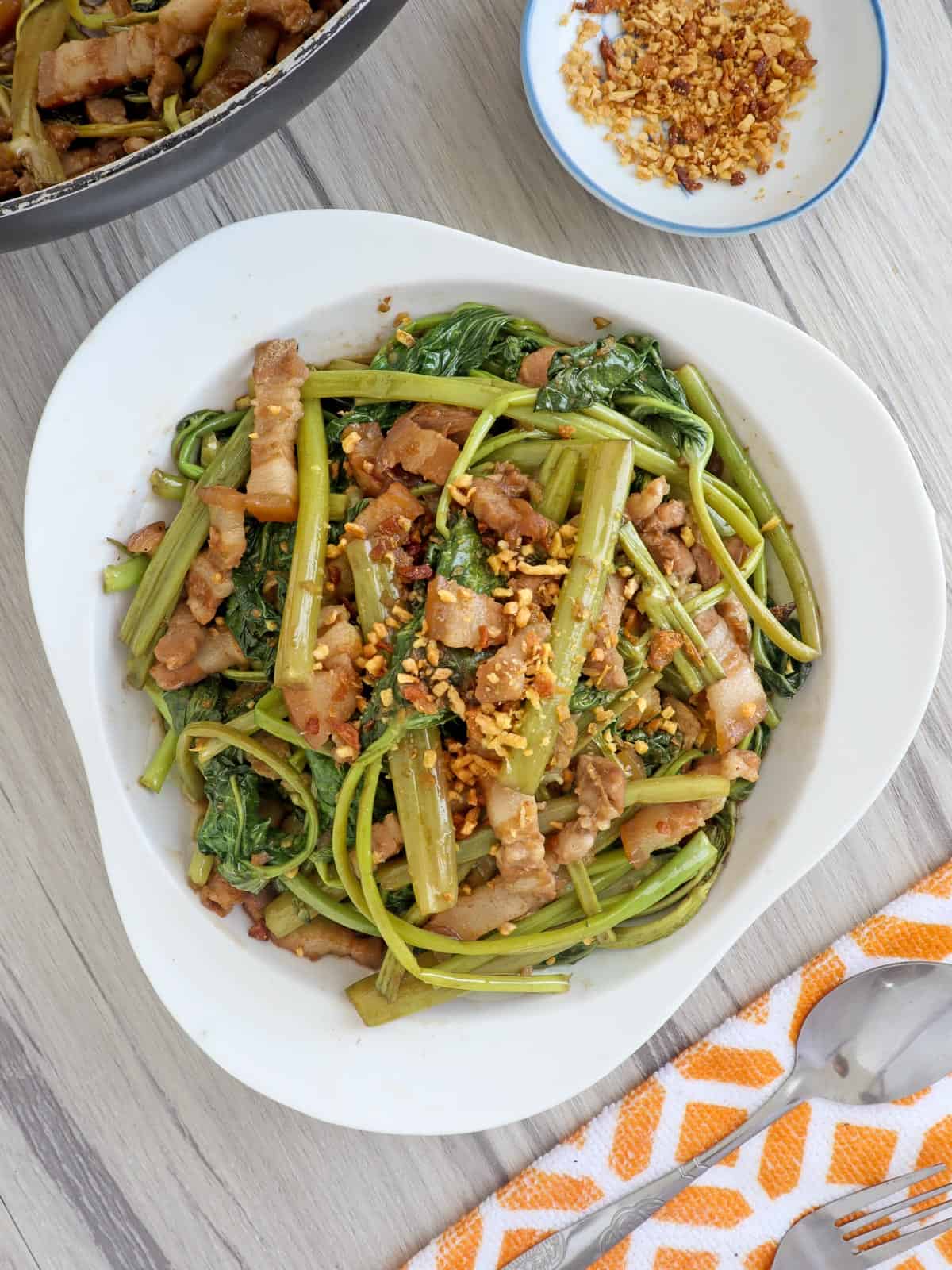
Adobo is one of the most iconic Filipino dishes and the quintessential Philippine stew. Referred to as the unofficial national dish, it's a delicious introduction to our unique and complex local cuisine.
It's more of a cooking method than a specific dish, as there are many variations from one region to the next. We have adobong talong, adobong talaba, aodobong hito, adobong sitaw, adobong itlog, chicken feet adobo, and this kangkong recipe, just to name a few.
Ingredients:
- Oil- for sauteing
- Onions and Garlic- aromatics boost flavor
- Kangkong – a leafy green vegetable with a mildly sweet and earthy taste. It is also known as swamp or water spinach.
- Pork belly- has a good balance of pork fat and meat. If you prefer a leaner cut, you can substitute pork shoulder or replace the meat with fried tofu for a vegan option.
- Vinegar– use cane or coconut vinegar for an authentic flavor
- Soy sauce– adds a salty and savory taste
- Salt and pepper- enhances the flavor and adds zing
Adobong kangkong cooking process
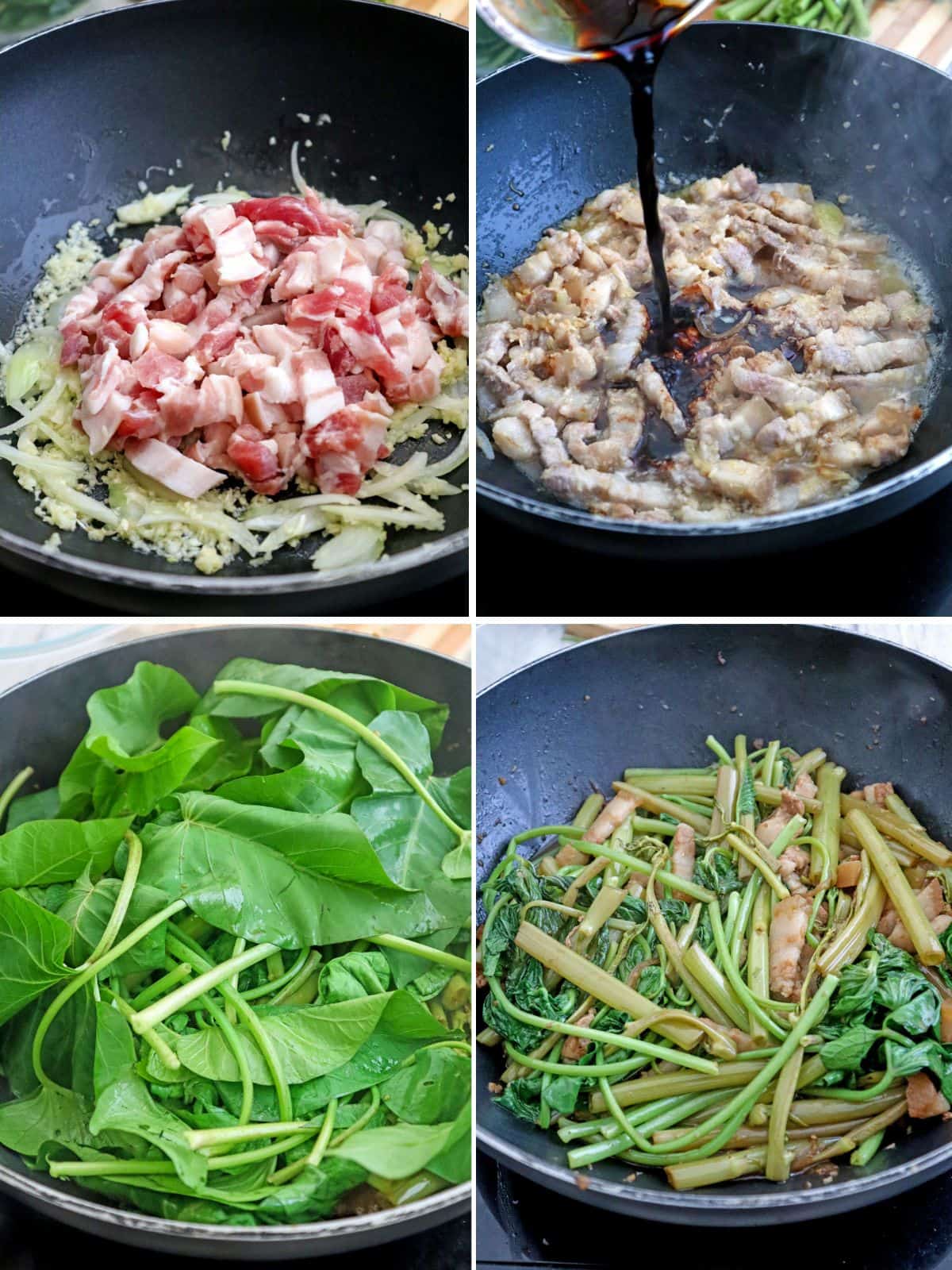
- Sear pork. Saute onions and garlic in hot oil until aromatic. Add pork and cook until lightly browned.
- Cook pork. Add vinegar and boil uncovered without stirring for about 2 to 3 minutes. Add soy sauce and water and bring to a boil. Lower the heat, cover, and simmer until the pork is tender and the sauce is reduced. Season with pepper to taste.
- Cook kangkong. Increase the heat to high. Add the kangkong stalks and cook until tender. Add the kangkong leaves and cook until just wilted and covered with sauce.
- Season with salt and pepper to taste. Garnish with fried garlic bits, if desired.
Not feeling adobo? Try this kangkong and tofu with oyster sauce!
Cooking tips
- Allow the vinegar to simmer for a few minutes uncovered and without stirring to cook off its strong acidic flavor.
- As the kangkong stalks are sturdier, add them first and allow them to cook for a couple of minutes before adding the leaves.
- Do not overcook the kangkong. Cook them until the leaves are just wilted. Immediately remove from heat as the residual heat will continue cooking the dish.
How to Serve and Store
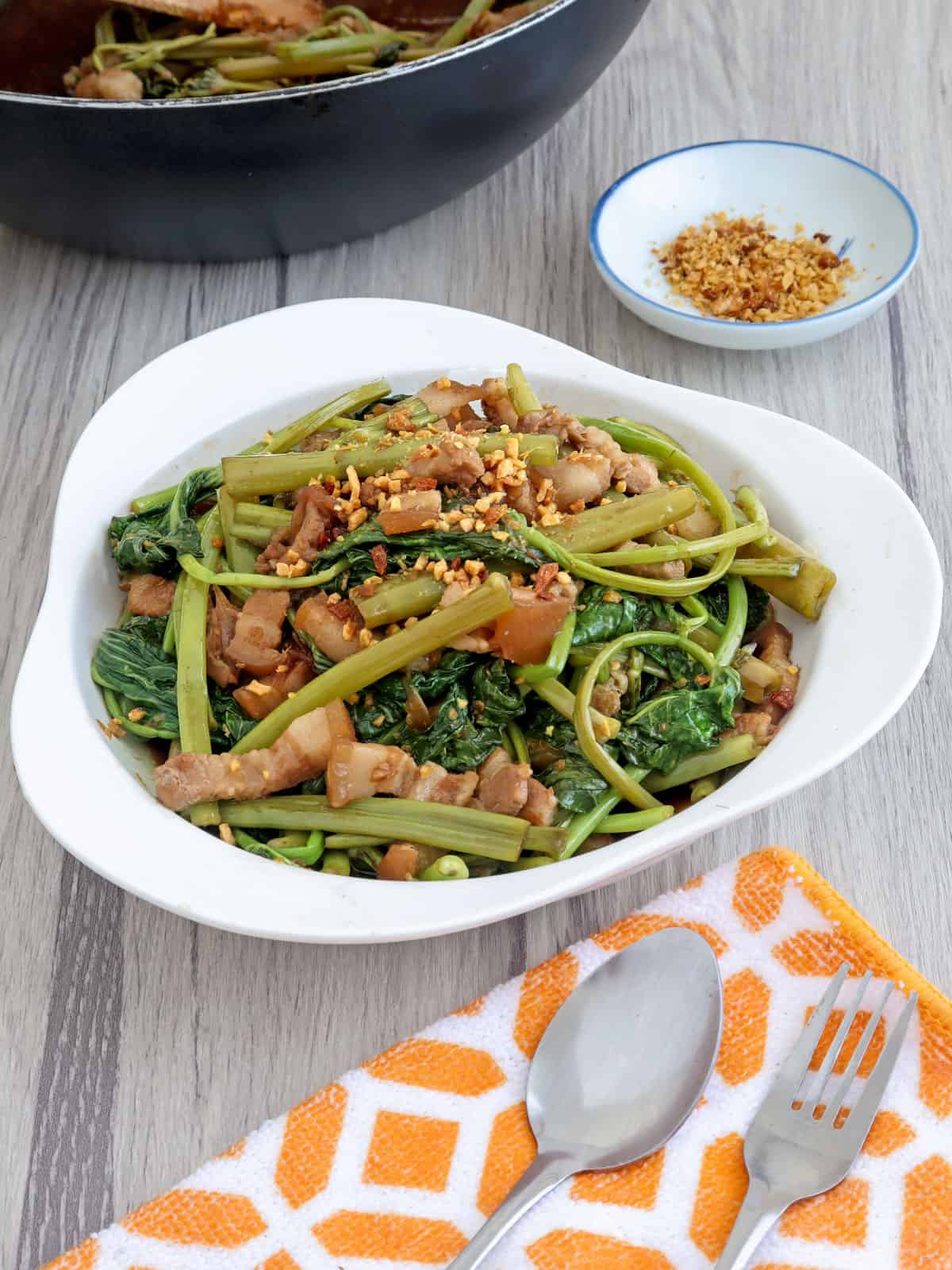
- Serve adobong kangkong as a main entree with steamed white rice or as a side dish with your favorite daing na bangus or grilled pork belly. Sprinkle with a generous amount of fried garlic bits for extra flavor and aroma.
- Store leftovers in a container with a tight-fitting lid and refrigerate for up to 3 days.
- Reheat in a saucepan over medium heat until thoroughly heated. Add more water and adjust seasonings as needed.
Ingredients
- 1 bunch kangkong
- 1 tablespoon canola oil
- 1 onion, peeled and sliced thinly
- 6 cloves garlic, peeled and minced
- ½ pound pork belly, , cut into ½ inch thick strips
- ½ cup vinegar
- ¼ cup soy sauce
- ½ cup water
- pepper to taste
Instructions
- Trim about 2 inches from the kangkong stalks and discard. Cut kangkong into 3-inch lengths, separating the sturdier stalks from the leaves. Wash thoroughly and drain well.
- In wide skillet over high heat, heat oil. Add onions and garlic and cook, stirring regularly, until softened.
- Add pork and cook, stirring regularly, until lightly browned.
- Add vinegar and bring to a boil. Continue to cook, without stirring, for about 2 to 3 minutes.
- Add soy sauce and water. Bring to a boil for about 1 to 2 minutes.
- Lower heat, cover, and cook for about 8 to 10 minutes or until pork is tender and sauce is reduced. Season with pepper to taste.
- Increase heat to high. Add kangkong stalks and cook for about 1 to 2 minutes.
- Add kangkong leaves and cook, stirring regularly, for another minute or until just wilted and covered with sauce.
- Season with salt and pepper to taste.
- Garnish with fried garlic bits, if desired. Serve hot.
“This website provides approximate nutrition information for convenience and as a courtesy only. Nutrition data is gathered primarily from the USDA Food Composition Database, whenever available, or otherwise other online calculators.”

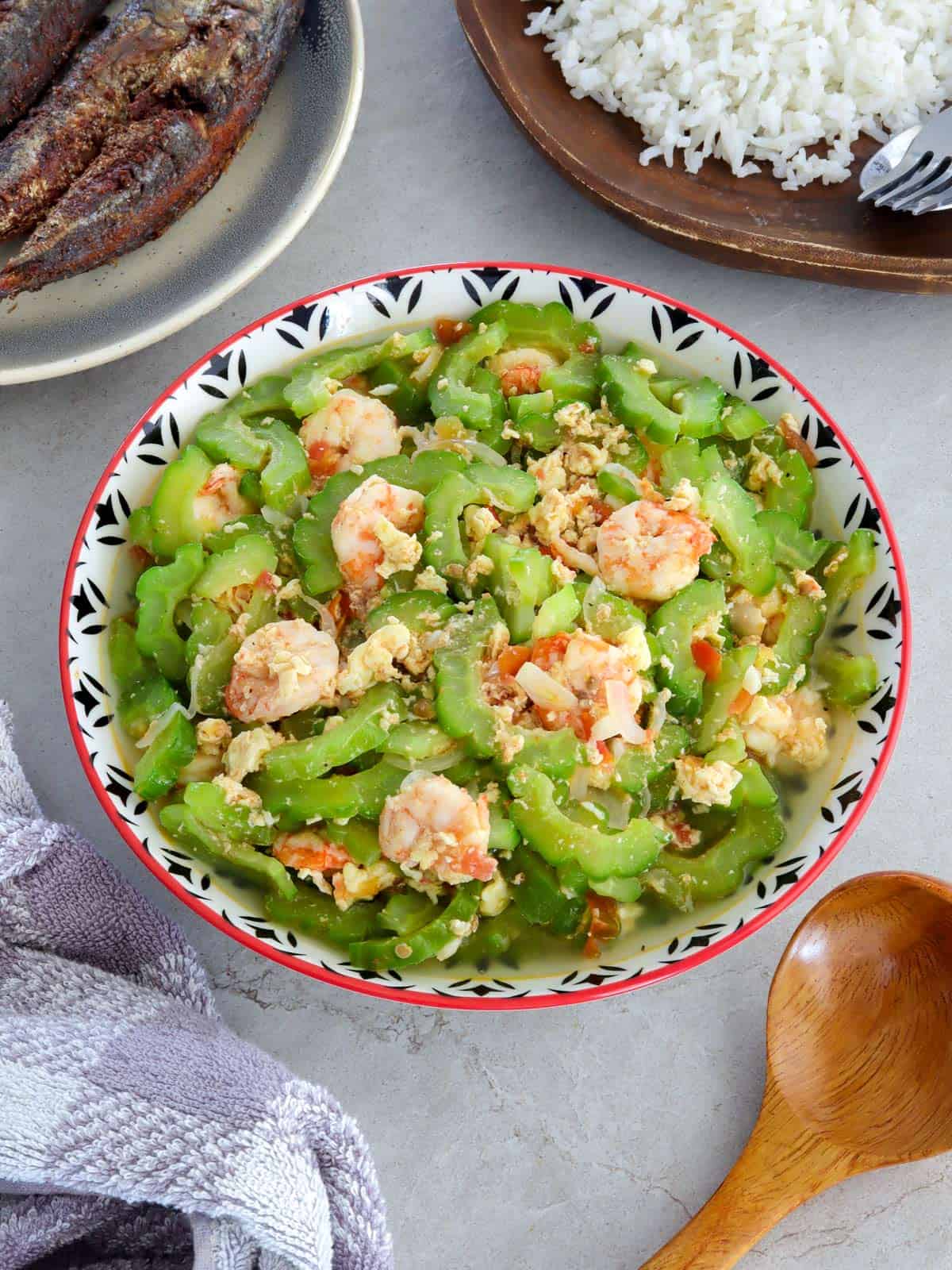
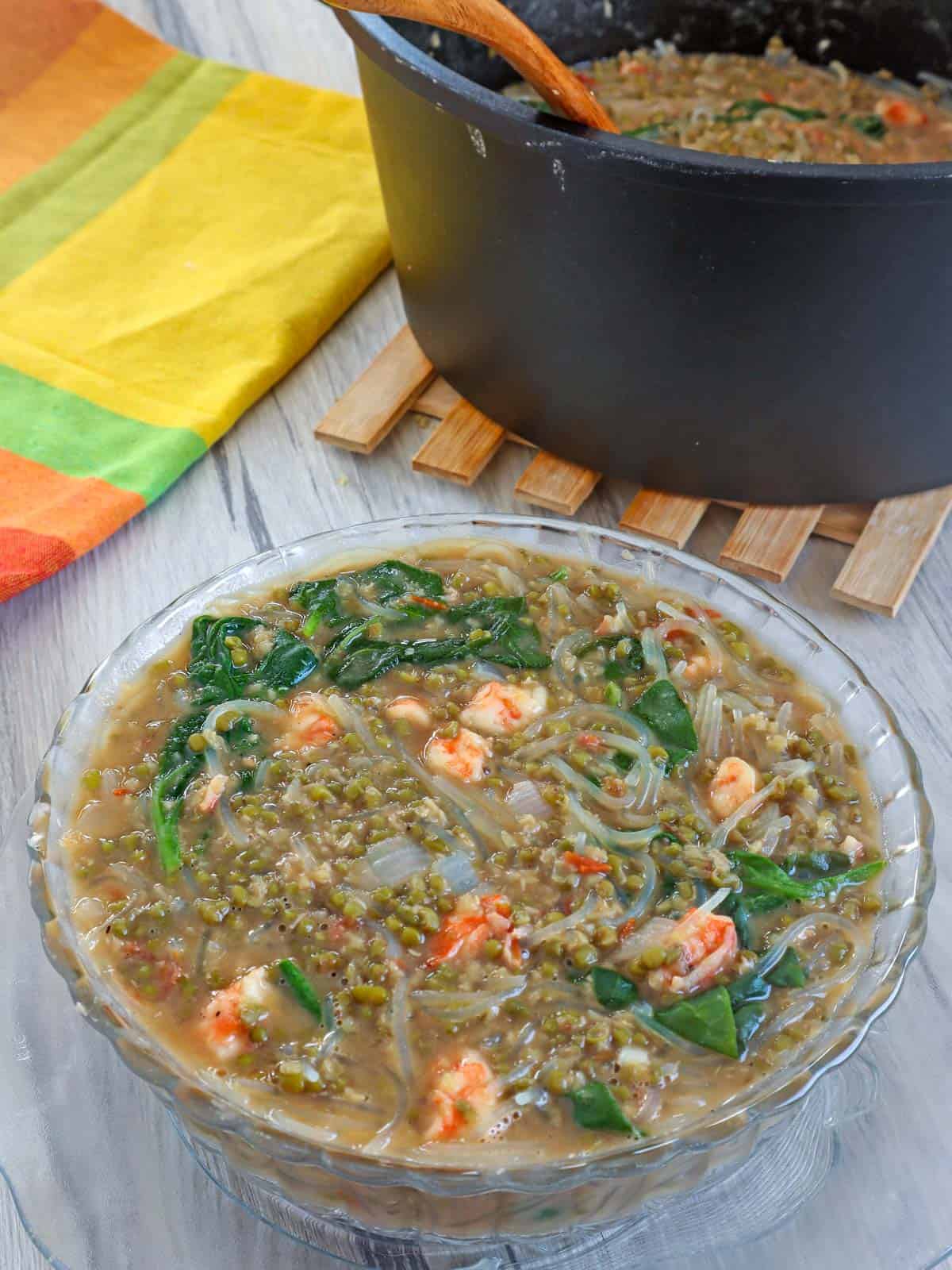
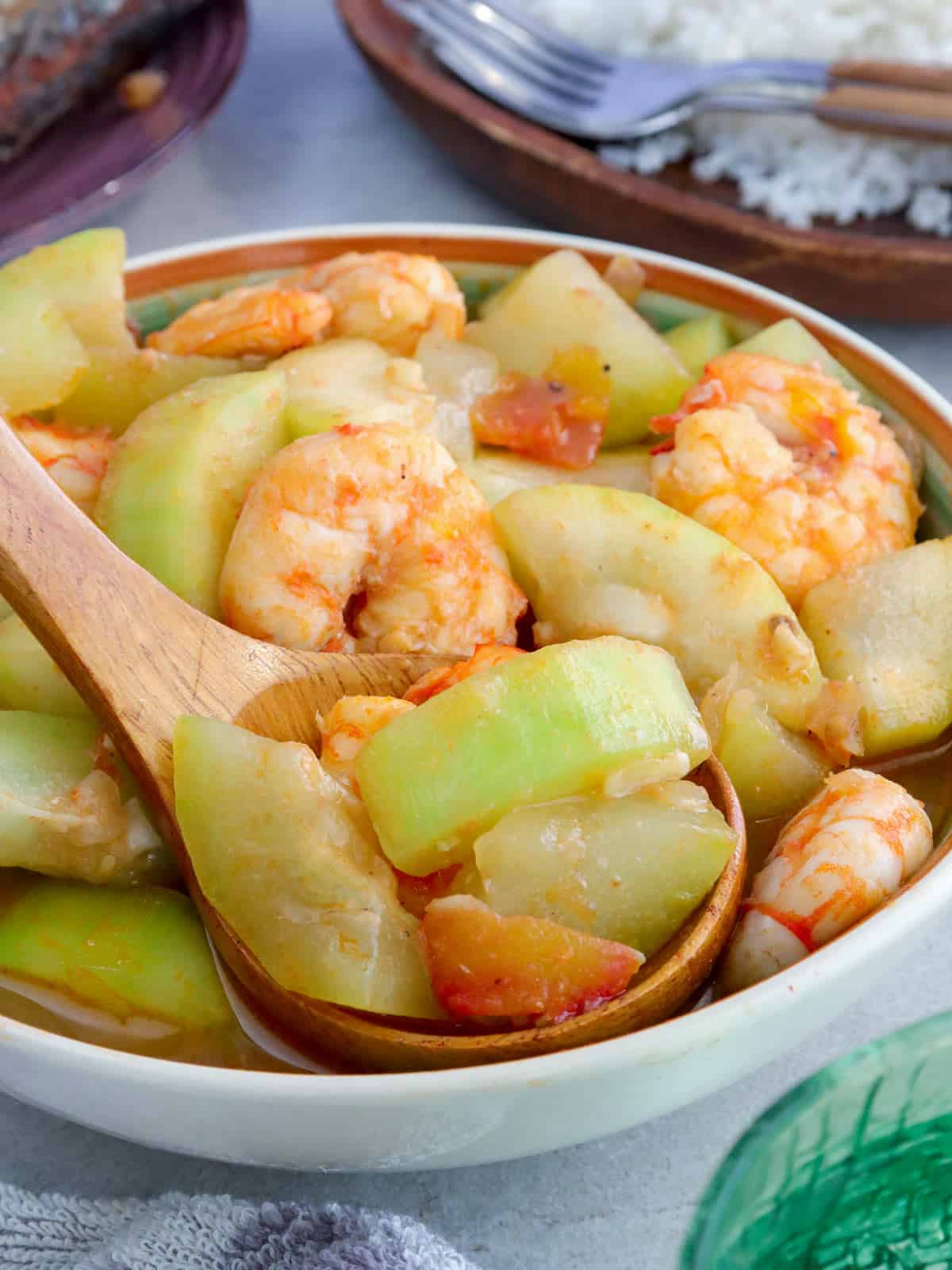
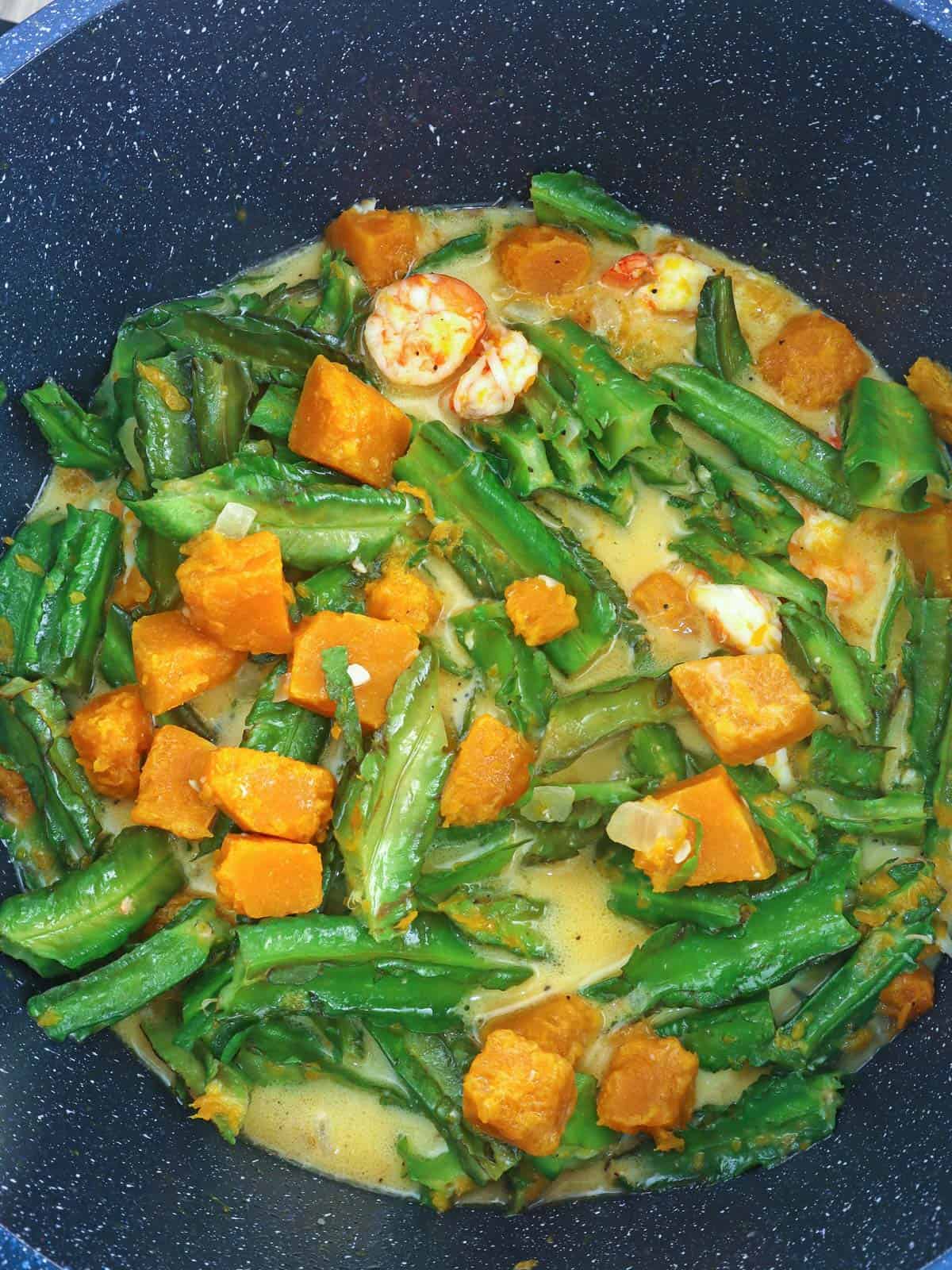
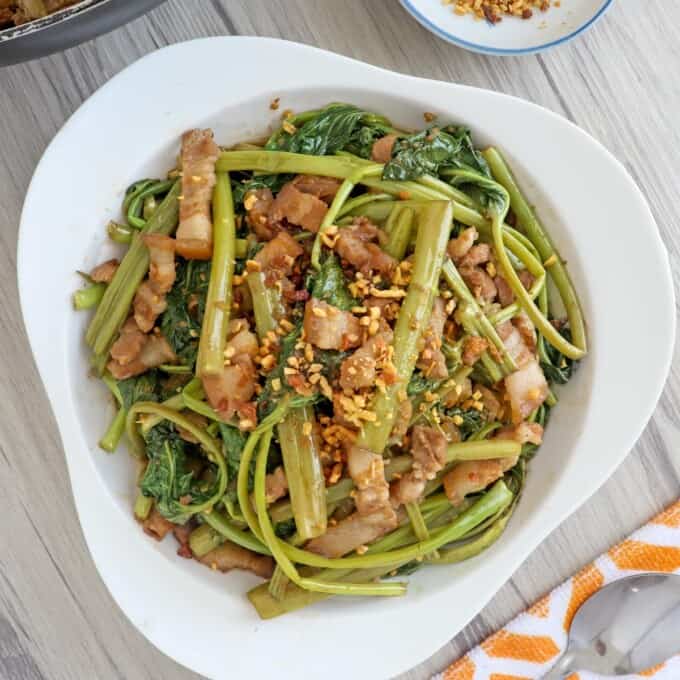
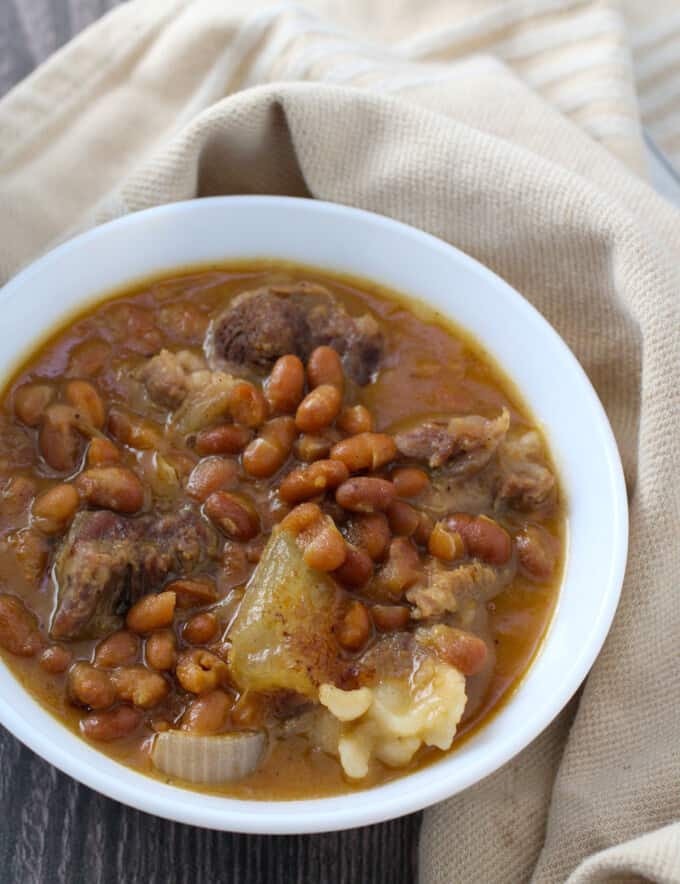
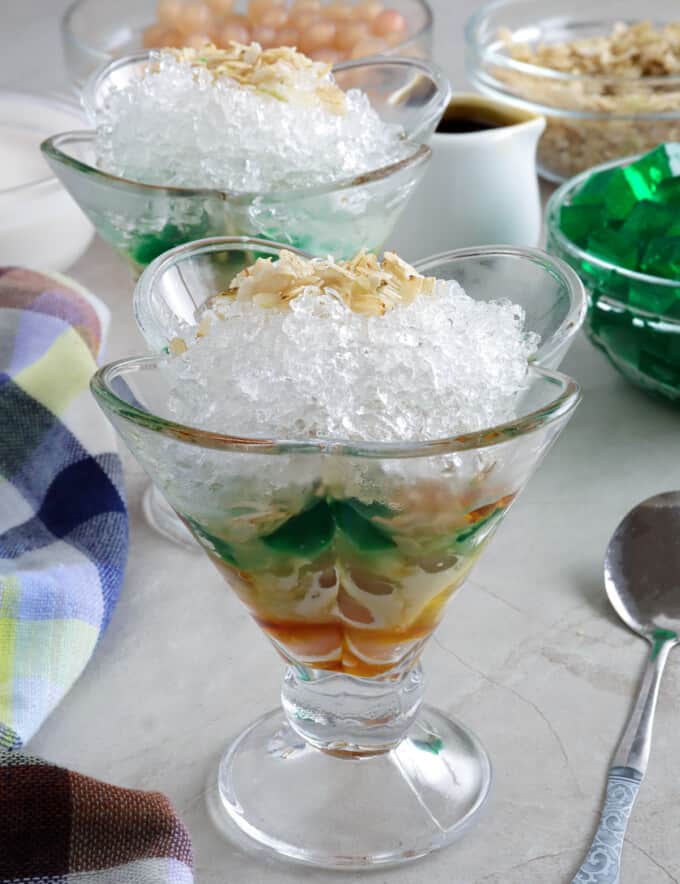
Lorna says
Hi, can we again start stirring when the soy sauce & water are added? Thank you.
Jon says
What can be used instead of kangkong? It's not available in the UK or not near me at least
Lalaine Manalo says
You can use sitaw or long beans 🙂
Zon says
Gusto ko mga luto mo napaka simbri matipid at masarap👍
M. Fujisawa says
Can I add tomatoes as well?
Mikke says
Love it
Ejole Costea says
Instead of pork can I replace it with chicken instead?
Thank you?
MaryAnn says
Hi Lalaine,
I live in Orange County CA. I would always substitute kangkong with spinach for most recipes being but in the US, but in the case of adobong kangkong, where do you suggest I buy the kangkong?
Lalaine Manalo says
I used to live in Orange county also in La Habra. I am not sure how far you are from Cerritos but there's a Seafood City supermarket on Norwalk Blvd. It's well-stocked and you can find plenty of Filipino produce to choose from.
Jake carlo says
Well my lolo hated it, ang asim...
elzendash says
we have a nutrition month
lol i didnt say that you lolo i hate you
elzendash says
we have a nutrition month
lol
elzendash says
we have a nutrition month
clarisse says
hello, thank you for sharing your recipes. I am new to cooking, and your site is my favorite go-to site. I already did 4 of your recipes. 🙂 They all tasted good. We just had this for dinner. 🙂 My husband loved it. I have a question though.. what is the purpose of 'not stirring' in step 3? Aside from following the recipes, I would really like to understand the do's and donts and reasons behind. Thanks again. 🙂
Lalaine says
Hello Clarisse,
I am so glad you find the recipes helpful. Once you add the vinegar, you let it boil without stirring and covering to cook off the vinegar and rid of the strong acid taste. 🙂
Josephine says
With reading your lead up on your Adobong Kangkong you sure do utilise your time for cooking, I love that in you. I'm a retired 70 year old swimming instructor, so now-a-days I have all day to think about and do my cooking. Once again, thank you for your wonderful inspiration on food,, keep up the good work and keep those wonderful recipes coming, God bless you my dear friend.
Lalaine says
Hello Josephine
Thank you so much. I truly warmed by your kind words and positive feedback.
kimmylegeralde says
you're welcome Lalaine. it's such a big help for me for our cooking class:)